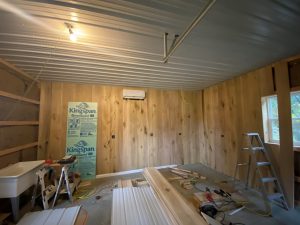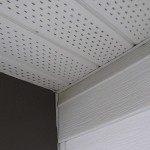Common questions we hear from barndominium, shouse (shop/house) and post frame home owners are, “Why are my new windows leaking?” or “Why do I have condensation inside of my windows?” In fact, many new barndominium owners think their windows are defective and need to be replaced in an effort to cure this problem. To answer these questions, let’s review what causes window condensation.
 Condensation is visible evidence of excess air moisture. It may appear as water, frost, or ice on window or door surfaces. This occurs more frequently during winter months because of extreme differences between inside and outside air temperatures. Warmer air holds more water meaning air in any given room center will hold more water than air adjacent to window or exterior door walls, since this area is always cooler. When warm, moisture laden air moves toward cooler window or door walls, it becomes cooler and cannot hold as much moisture as it held when it was warmer. This moisture is dropped and appears as water on glass and frames of windows and doors.
Condensation is visible evidence of excess air moisture. It may appear as water, frost, or ice on window or door surfaces. This occurs more frequently during winter months because of extreme differences between inside and outside air temperatures. Warmer air holds more water meaning air in any given room center will hold more water than air adjacent to window or exterior door walls, since this area is always cooler. When warm, moisture laden air moves toward cooler window or door walls, it becomes cooler and cannot hold as much moisture as it held when it was warmer. This moisture is dropped and appears as water on glass and frames of windows and doors.
Windows do not cause condensation, they just happen to be where moisture is most visible. Condensation is a sign of excess moisture in barndominiums. This can be caused by temporary conditions such as:
Building materials contain a great deal of moisture. As soon as heat is turned on, this moisture will flow out into the air and settle on door and window glass. This will usually disappear following first heating season. During humid summers, houses absorb moisture. This will be apparent during the first few weeks of heating and then should dry out. Sharp, quick, and sudden drops in temperature especially during the heating season will create temporary condensation problems.
Condensation can also be caused by more permanent conditions:
 Insufficient attic ventilation and/or soffit ventilation traps moisture in barndominiums. Having sufficient soffit vents to allow adequate air flow in and ridge vents for exhaust will allow moisture and humidity to escape. Excessive humidity may be a result of poor ventilation but can also be a result of an imbalanced heating and air system or a need to add additional ventilation. Inadequate (or missing) vapor barriers under concrete slabs on grade. While Building Codes require a vapor barrier under any concrete slabs in heated buildings, it is all too often overlooked.
Insufficient attic ventilation and/or soffit ventilation traps moisture in barndominiums. Having sufficient soffit vents to allow adequate air flow in and ridge vents for exhaust will allow moisture and humidity to escape. Excessive humidity may be a result of poor ventilation but can also be a result of an imbalanced heating and air system or a need to add additional ventilation. Inadequate (or missing) vapor barriers under concrete slabs on grade. While Building Codes require a vapor barrier under any concrete slabs in heated buildings, it is all too often overlooked.
Controlled ventilation and elimination of excessive indoor moisture can keep humidity within bounds. Here are some suggestions to help reduce indoor moisture:
Turn off or set back furnace humidifiers until sweating (condensation) stops. Remove pots of water on radiators or kerosene heaters. Use exhaust fans or open windows slightly in kitchen, bathroom and laundry room during periods of high moisture production such as cooking, taking showers, washing and drying clothes. Clothes dryers must be vented outside. Do not hang clothes to dry indoors. Waterproof concrete floors. Make sure attic vents are unobstructed. Place all house plants in one sunny room where the door can be kept shut and avoid over watering. Opening windows slightly for a brief period of time will allow humid air to escape and drier air to enter. Use a properly sized dehumidifier, to reduce humidity.
Excessive indoor humidity and moisture are not a result of your windows. You should view the amount and severity of window condensation as a clue moisture damage may be taking place inside walls or ceiling cavities of your barndominium. This can lead to rotting wood, deteriorating insulation, and blistering paint.






